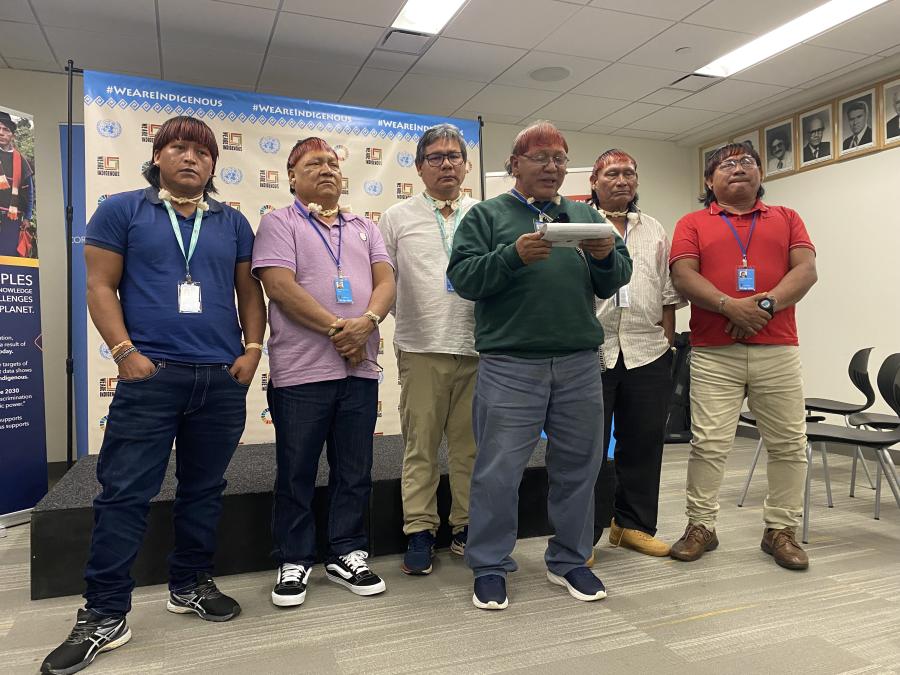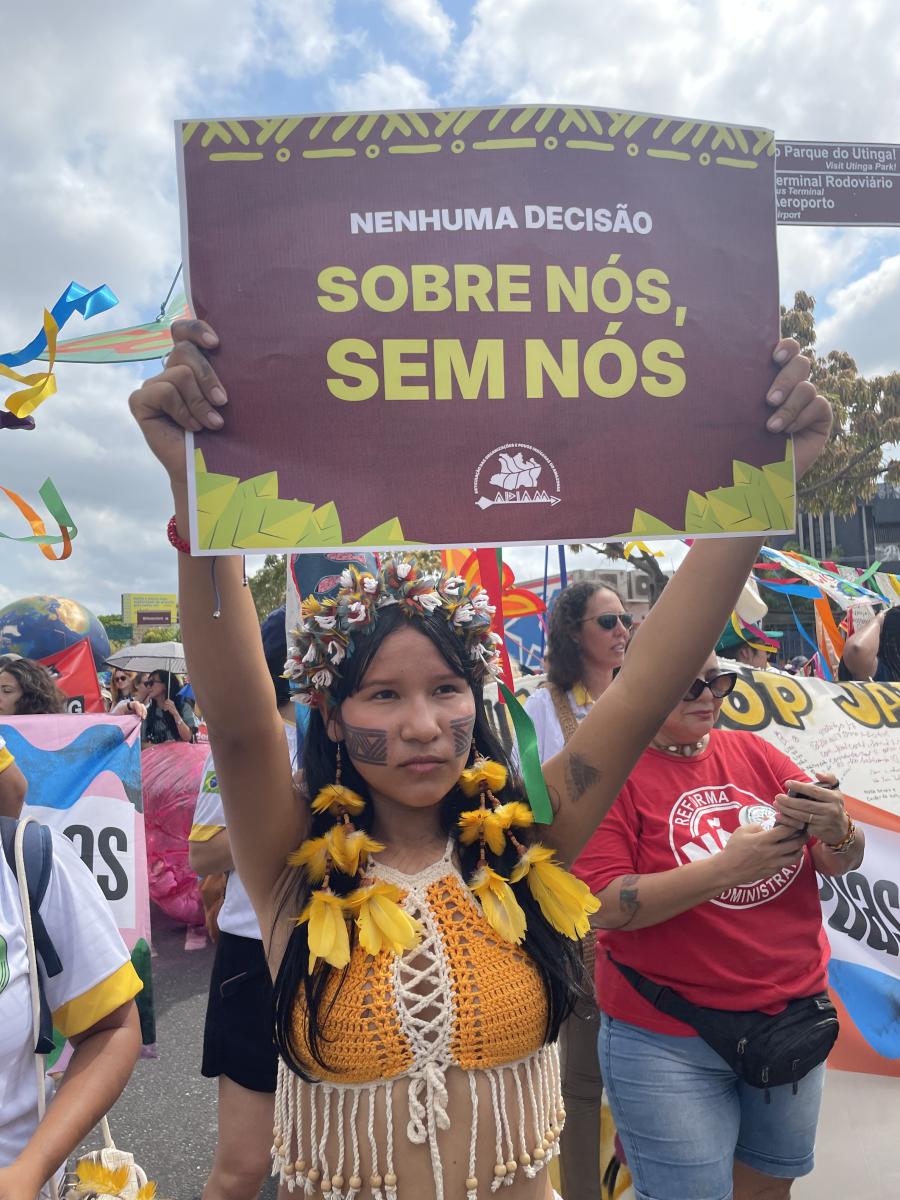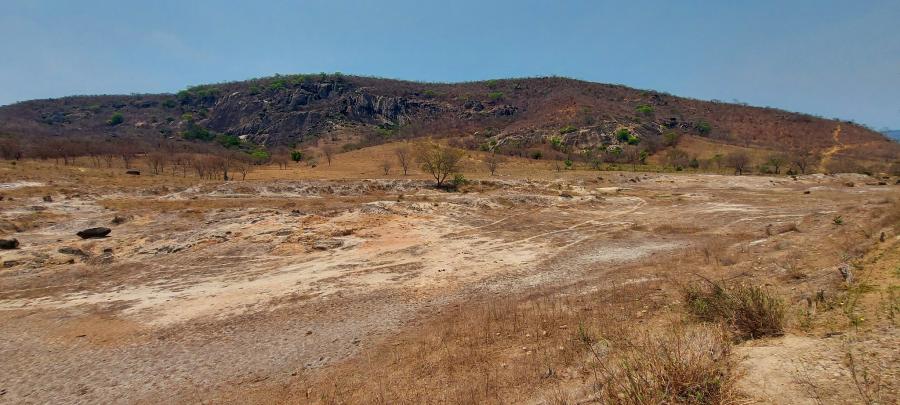Banking on Disaster. 1988, 78 minutes. Produced and directed by Adrian Cowell. (Bullfrog Films, Oley, PA 19547)
Blowpipes and Bulldozers, 1988, 60 minutes. Directed by Jeni Kendall and Paul Tait. (Bullfrog Films, Oley, PA 19547)
Contact: The Yanomami Indians of Brazil. 1989, 30 minutes. Produced and directed by Geoffrey O'Connor. (Filmakers Library Inc., 124 E. 40th St. #901, New York, NY 10016)
These videotapes are first-rate introductions to the impact of development on indigenous rainforest peoples. The most ambitious in scale is Banking on Disaster, which documents over an eight-year period the sociocultural and environmental fallout from Polonoroeste, a World Bank-funded resettlement and colonization scheme that cuts into the heart of the Amazon rain forest in the Brazilian state of Rondonia and Acre.
Banking on Disaster spans all aspects of Polonoroeste, from the clamorous Amazonian frontier to the rhetoric-filled hallways of Washington, DC, presenting a range of characters from indigenous inhabitants to investment bankers. The film maintains cohesion, though, by focusing upon the lives of two individuals at the core of Amazonian development: a poor farmer named Renato, who has come to Rondonia following the government's promises of free land, and the late Chico Mendes, a leader in the Acre rubber tappers' grassroots struggle to establish extractive reserves for rubber and Brazil nuts. Renato is part of an Amazonian development scheme conceived and implemented by outsiders, ultimately benefiting only a few ranchers and road contractors at tremendous environmental cost. Chico is promoting a locally initiated vision of development attuned to the Amazonian environment. In the contrast between the blackened, cut-over landscape of Rondonia and the verdant forest still extant in Acre hangs the future of Amazonia.
Although Banking on Disaster addressed indigenous issues, the film unfolds on such a grand scale that the cultural impact of Polonoroeste upon the tribal peoples of the region is not explored in any great depth. Blowpipes and Bulldozers and Contact, by contrast, focus on the struggles of specific indigenous groups.
Blowpipes and Bulldozers documents the Penan people of Sarawak, Malaysia, who are waging a campaign of nonviolent resistance against timber cutting operations encroaching upon their traditional rainforest lands. The Penan are one of the world's few remaining cultures still practicing a largely nomadic hunting-and-gathering existence.
The film beings with the enigmatic figure of Bruno Manser, a Swiss artist who lived, against the wishes of Malaysian authorities, with several Penan family groups from 1984 to 1989. Although Manser's presence helped to focus international attention upon the Penan, they and other indigenous peoples of Sarawak have had a well-organized nonviolent resistance movement against the timber operations for more than a decade. Their efforts culminated in the mid-1980s with a series of highly effective blockades of timber haul roads. The blockades ended only when the Malaysian government called in the military, and arrested and imprisoned without trial many Penan leaders.
Two factors fuel the destruction of Sarawak's forests: the developed nations' insatiable appetite for tropical timber, and the appalling willingness of Malaysian elites and multinational corporations to extract the trees in a blatantly unsustainable fashion. Caught in the middle are the Penan, whose resource base of fish and forest animals has gradually disintegrated with the advance of logging. Blowpipes and Bulldozers is an eloquent plea in support of the Penan as they strive for an alternative future to the sedentary, malnourished existence they now face among the eroding hillsides and sediment-choked streams of their former forests.
Contact focuses upon the Yanomami Indians of Brazil. One of the largest and least-acculturated indigenous groups in the Amazon, the Yanomami are bearing the brunt of an uncontrolled gold rush on their lands in the state of Roraima. The gold miners have wrought significant environment damage upon Yanomami territory; a plague of airstrips has spread across the jungle, and streams have been poisoned by mercury used to extract the gold. This film focuses, however, on the cultural degradation and disturbance that the gold miners have brought to the Yanomami by introducing Western goods, a cash economy, and, most devastatingly, malaria, influenza, and other foreign diseases.
By vividly presenting both Indian and miner viewpoints, the film demonstrates that the erosion of Yanomami culture is due not to contact itself, but rather to the pace and process by which contact occurs. Sadly, the Yanomami are facing the same development mentality that has characterized the New World frontier for the past 500 years. Indigenous people today have more resources available with which to confront development threats, but they still face the same uphill struggle.
Todos Santos Cuchumatan: Report from a Guatemalan Village. 1979, 41 minutes.
Todos Santos: The Survivors. 1989, 58 minutes. Both films directed by Olivia Carrescia. (both available from First Run/Icaurs Films, 153 Waverly Place, New York, NY 10014)
Todos Santos Cuchumatan documents life in an indigenous highland Guatemalen village, focusing on how villagers adapt and reaffirm their cultural identity in the face of a deeply unjust Guatemalan economic system. With fertile land in short supply around Todos Santos, the men must migrate to the coast for seasonal employment on plantations. Since villagers consider the steamy coastal climate unhealthy, women and children usually remain in the highlands. Family members are separated for months and educational opportunities are minimal, but strong cultural threads bind the villagers together, and they proudly maintain their Indian identity.
Tragically, this framework has been shattered. Shortly after the film was completed, the Guatemalan military began a brutal, deadly crackdown against Todos Santos and other indigenous communities whom they suspected of aiding leftist rebels. Following the 1985 elections, filmmaker Carrescia revisits the village in Todos Santos: The Survivors. The villagers' candid honesty is replaced by guarded comments, and they recount dark and horrifying tales. Few families remain intact, and many villagers have moved to Guatemala City or Mexico; those who remain take part in compulsory, armed village patrols, for which they receive no payment. They all express hope of returning to a normal life in Todos Santos, but feel it is impossible given the political situation.
Over time, Todos Santos may again become a vibrant community. But as long as Guatemala remains militarized, the indigenous villagers will live under the long shadow of past events, and the highlands will continue to be a place of fear.
Article copyright Cultural Survival, Inc.



